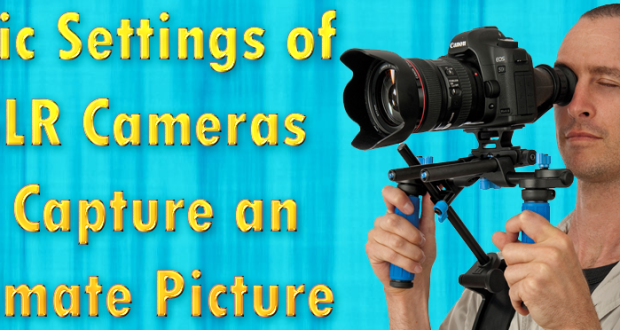DSLR prices have been falling drastically with the advent of new technologies. DSLR is preferred over Point and shoot cameras because of its ability to control almost every aspect of the shooting mechanisms. You can have control over shutter speed, aperture, focus, sensitivity, etc. Let us take quick trips over the Basic Settings of DSLR Cameras.
Basic Settings of DSLR Cameras to Capture an Ultimate picture
Shutter speed
Switch to manual mode in your camera, indicated by the letter ‘M’. You can set the Shutter speed to change the amount of time the shutter will be open to allow light to the sensor. It’s calculated in seconds. The more is the shutter speed, the less the amount of light and vice versa. Low shutter speed is used when there is low light or to trace the path of a slowly moving object. High shutter speed is used to freeze fast moving objects or when the amount light is high.
Aperture
Aperture is the opening of the diaphragm inside the lens which changes the amount of light and depth of field. Aperture is denoted by the f-number. The more the aperture, the more the amount of light and vice versa. Wide open aperture helps in increasing the depth of field i.e.; the object in focus is sharp, and the objects out of focus or blurred. Lower f-number indicates the larger aperture.
Focus
Focusing usually starts from infinity to macro level. Focusing is the movement of lenses to focus on an object to make it sharp. Almost every camera is equipped with an autofocus mechanism. But manual focus is definitely a better option as it helps to gain control over fast moving objects and macro subjects.
The ISO sensitivity
The ISO sensitivity is the property of the sensor which helps to determine how much sensitive is the sensor to light. Lower number denoted high sensitivity. High ISO also has some disadvantages, such as overexposure, grains, loss of colors etc. One should try to keep it as low as possible. Less ISO values results in vibrant colorful photos.
Some other settings
Other factors influencing the photos are white balance, flash, red eye reduction etc. White balance helps to adjust the white in a photograph to true white in real life and other color accordingly. Flash is used when there is low or almost no light, external flash is often useful in night photography. Red eye reduction is common in almost every camera and should be activated to reduce the red eye effect when shot with flash.
Keeping the above points in mind, one can improve his/her ability to shoot great photos. At first, it takes time to gauge the values, but with time the capability to determine near about exact values of the settings and in no time can alter the settings to shoot a great photo.
So above mentioned are the Basic Settings of DSLR Cameras to Capture an Ultimate picture, If you want to add your suggestion for any Basic Settings of DSLR Cameras, Please share with our readers.
 Techsute Mobile, Cars, Laptop, Camera,Tablet, Apps
Techsute Mobile, Cars, Laptop, Camera,Tablet, Apps 





Excellent description for the beginners who are turning towards photography as hobby. With DSLRs today there are so many setting and features that one has to take into account every aspect. And one such aspect is of choosing the flash SD card for camera. People tend to go for higher capacity SD cards, but do not think about the flash card’s write/read speeds. DSLRs have HD recording and burst rate features, for which flash cards of Class4 or even Class 6 do not suffice and can result in frame loss during HD recording or burst modes. To cater to high speed writings one should always consider Class 10 and above flash cards, for instance a Kingston Class 10 UHS-I SDXC flash card would be able to record your HD movies seamlessly without any frame loss. Simple SD cards are good for still photography, but if you want HD video recordings and RAW images at high resolutions, then always invest extra by opting for SDHX/SDHC memory cards.